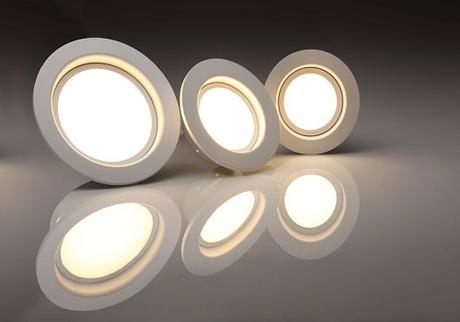Climate change, global warming, water crises, and massive global pollution are currently plaguing the planet. If people don’t do anything to remedy these problems, the world will soon become a hostile place for all living creatures: humans, plants, and animals.
You can help in your own way by changing your lifestyle habits, starting at making your home a more eco-friendly space. Here are small steps you can take at home that will help the environment.
Use LED Lights
The typical American home uses an average of 40 light bulbs. Whether you use fewer or more lights, using LED bulbs is more eco-friendly and cost-effective.
Not only do LED lights consume 75 percent less energy than incandescent bulbs do, but they also last 25 times longer, according to the US Department of Energy. Alternatively, CFLs also use less energy than incandescent bulbs. However, CFLs are less energy-efficient than LED lights are.

Choose Water-Efficient Fixtures
Water is a precious resource, but it’s dwindling at an alarming rate. With 21 out of 37 of the world’s aquifers rapidly drying out, water conservation must be religiously practiced by industries and households.
There are many ways you can practice conservation at home, beginning with using water-efficient fixtures. Switch to low-flow showerheads and faucets and use a low-flush macerating toilet to cut down your water use.
If you have a bad habit of leaving the tap on while doing other things, consider upgrading to an automatic shutoff faucet, or get rid of that wasteful behavior.
Opt for Energy-Efficient Appliances
When it’s time to change electronics at home, select appliances with the Energy Star sticker on them. The sticker means the machine or gadget uses less energy and in an efficient manner.
While energy-efficient appliances can be more expensive than their inefficient counterparts, Energy Star–labeled electronics will save you more electricity and money in the long run and help the environment. Most efficient electronic devices are top-quality, high-performing, durable pieces.
Plug Off Electronics
Your TV, phone charger, and desk lamp that are plugged in when they’re not in use are all parasitic vampires, sucking in energy despite being turned off or unused.
In modern homes, many devices are left unplugged while they’re idle, so a lot of energy is wasted every year. Help save energy and the environment and reduce your electricity bills by either unplugging your unused appliances and gadgets or using a power strip with a power switch.
Recycle Used Water
Just because water has been used doesn’t mean it can’t be utilized again. The water you use for washing fruits and vegetables or your laundry can still be recycled for cleaning your garage, your driveway, and other areas in your house.
If you use biodegradable, eco-friendly detergent or soap, the “dirty” water can even be safe enough to hydrate your plants.
Start a Recycling Bin
Recycling is much more doable if you have designated bins to throw recyclable materials at home. You can take it up a notch by separating plastics, tin cans, glass, and paperboard into separate containers. This makes it easier to deliver them to the proper facilities and make the whole recycling process faster and more efficient.
Get a Compost Bin
Maintain a healthy garden, lessen pollution, and help the environment by starting your own compost bin. It’s a simple and inexpensive way to reduce your garbage and keep your soil and plants healthy.
Composting may be challenging at first, but it will be easier when you get the hang of it. The first step is to prepare a stainless steel compost bin with a lid (to cover up the smell) and line it with a biodegradable bag. From there, you need to learn what you can and cannot compost. This complete composting guide will provide you with all the information you need to know the rest.
Use Fewer Paper Products
Paper is made from trees, and trees provide people with air to breathe. Trees also absorb greenhouse gases, prevent soil erosion, and give food and shelter to living beings. But millions of trees are cut down every year to make paper towels, delivery boxes, and text paper.
Save the trees by using fewer paper products at home. Instead of paper towels, use rags and reusable beeswax wrappers. Sign up for paperless billing with your home-service providers. If you must use paper products, opt for those made from recycled materials.
Small Steps, Big Impact
One person alone can’t save the environment, but if every person takes small steps toward a sustainable lifestyle, the world’s collective effort will have a big impact on saving the planet. It all starts by being mindful of how your actions affect the environment, pursuing a sustainable living, and using knowledge and technology to reverse the damage caused by humans.
